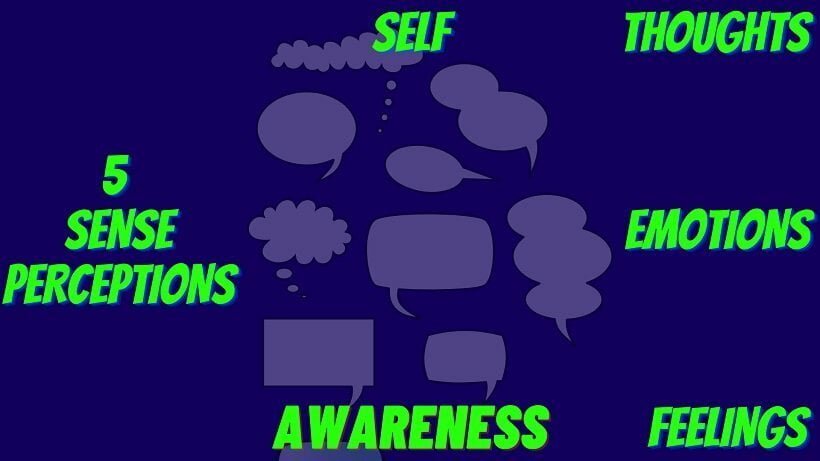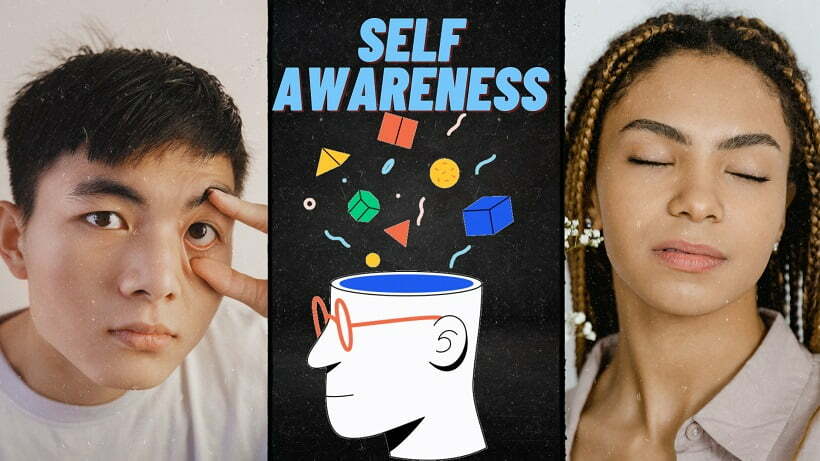Self-Awareness gives us the ability to use our cognitive abilities more effectively. Only when we are aware of what’s going on around us and within ourselves, can we make the most of the opportunities we have.
We are a product of our habits. Self Awareness is very important for us to be able to bring about change in our behaviors or habits. We can influence our subconscious mind with our conscious thoughts through self-awareness and bring about behavior changes.
Most of us generally pay attention to what’s going on outside us or external awareness. Even though many of us do have feelings and emotions, we can not use them well enough. Research on self-awareness says that true self-awareness is a rare quality.
Most meditations start with some self-awareness routine. It is like a warm-up routine before an intense workout. We do need to develop internal awareness so that we can understand our own subjective selves and others.
Self-Awareness
What is Self-Awareness?
Self is who I am?
- Awareness of self is knowing who I am and what is going on with me.
- Self-awareness is the ability to be conscious of our own bodily sensations/ feelings, emotions, thoughts, and behaviors.
- It is the ability to be mindful of our own thoughts and feelings and to be able to recognize and understand them.
The subconscious mind copes with ongoing situations and gives us continuous feedback through changes in physiology, emotions, and intuitive thoughts.
To be self-aware is when our conscious mind is aware of what’s going on deep inside our own mind. We start noticing the normally unnoticed involuntary nature of these sensations, emotions, and thoughts that arise from our subconscious mind.
For being self-aware and making decisions one requires the ability to focus attention within the mind. For holistic understanding, we need to be aware of what is going on outside as well as inside of us. Practice can help us develop focus, and awareness and be more self-aware.
With self-awareness, we start knowing more about the experience in terms of our:
- Feelings
- Emotions
- Thoughts

Guided Self-Awareness Exercise for Beginners.
Self-awareness can be there with eyes open or closed. We have created two fast-paced versions for beginners with and without background music. Choose what suits you.
[yt_playlist mainid=”IT1x-zmNLfU” vdid=”IT1x-zmNLfU,S4OOj5BsMHY”]
With practice, we can improve our self-awareness thereby enabling us to make better decisions.
Create Your Own Awesome Self-Awareness Routine
If someone has a meditation practice, they may be able to easily relate to some of the experiences given below by mere reading.
As a beginner, it is easy to practice self-awareness with eyes closed.
- The external distractions get reduced, and it is easier to focus on what is happening within ourselves with closed eyes. Once we use the technique more and more, we are likely to develop awareness with open eyes as well.
- When we learn disassociation at these levels of our experience, it becomes easier to see self each aspect clearly.
- We may read the observations given below a couple of times. They close their eyes and sit still, observing whatever is happening in their own mind and body.
- The focus can be anywhere between the eyes to the center of the heart, wherever we think we can easily connect to our own mind.
Observations:
- Let us start with our neutral state.
- We can take a few deep breaths until we feel at peace with ourselves, safe and secure.
- This is our normal and naturally relaxed state.
- As we take a few more deep breaths, we may notice the deepening of the relaxation throughout the body as we experience sleep.
- As we continue to observe the breath, we may become AWARE of rapidly changing thoughts in our minds.
- As we begin to observe our body, we focus our attention from our head to toe.
- As we take one more breath, we may notice the feelings from the top of the head to the toe.
- We may observe the movement of air in our nostrils or the movement of our abdomen.
- With each breath, we feel more and more relaxed, and we may notice, the rhythm of the breath.
- As we effortlessly watch our breath, we may notice the involuntary nature of our breath.
- As we focus our attention on the sensations in our body and mind, we may start observing the feelings.
- As we continue to observe, our conscious mind may spring up to give a name to this experience.
- If we voluntarily decide to let go of the tendency to label the experience, we will observe the moment-to-moment changes.
- As we continue to observe the feelings from head to toe and toe to head, we may notice the involuntary nature of these feelings.
- As we continue to watch these feelings, we may notice some as physical sensations in the body and some as mental sensations in the mind.
- As we continue to relax, we may notice involuntary changes in physical and mental sensations.
- As we continue to relax more and more, we may soon realize the temporary nature of these feelings.
- As I continue to relax completely, I will realize that the feelings are in me, but I am not the feelings.
- As I continue to be AWARE, I realize that I am “not the feelings”, “nor the thoughts”.
- If I am not the feelings, nor the thoughts, I observe the self as the knower of the involuntary and voluntary thoughts and feelings.
Notes:
- We may experience any of these or a variant of these states when we practice self-awareness.
- It is not necessary that we experience all these states.
- The states described here are our natural states of being, and the order may vary in our experiences.
- The deeper we connect with our natural states of being, the more creative energy we can harness.
